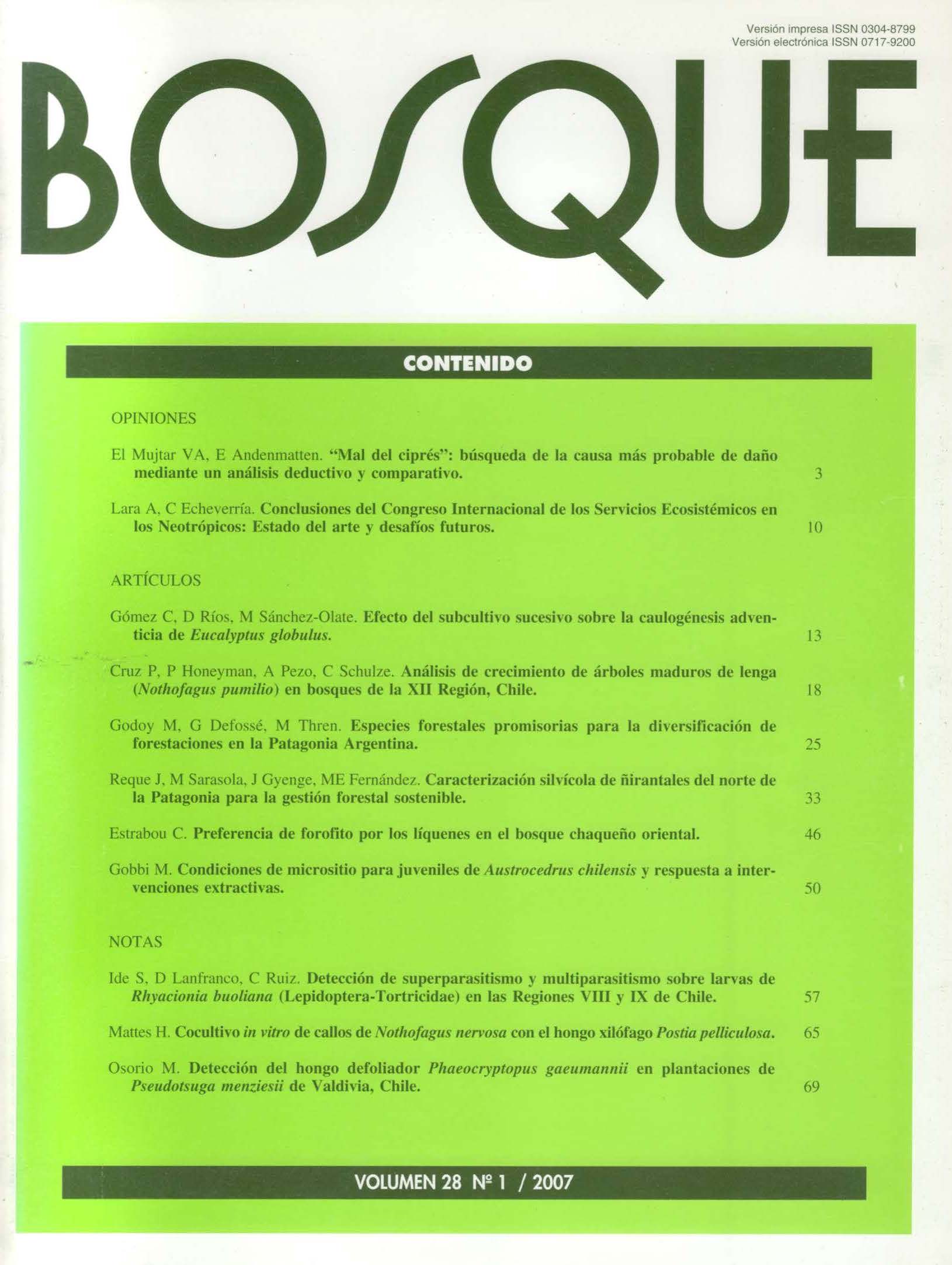Condiciones de micrositio para juveniles de Austrocedrus chilensis y respuesta a intervenciones extractivas
Contenido principal del artículo
Resumen
Se evaluaron los requerimientos ambientales de juveniles de ciprés de la cordillera (Austrocedrus chilensis) y el impacto de algunas prácticas silvícolas extractivas sobre su abundancia y tamaño. El estudio se realizó en cuatro sitios de bosques puros y densos de esta especie, en los bosques andino-patagónicos argentinos. En cada sitio se estudió una parcela sin intervenir y 1-3 parcelas con intervenciones extractivas (raleos y remoción del sotobosque). En las parcelas sin intervención se estudió la influencia de la luminosidad, cobertura arbórea, arbustiva y herbácea, como condiciones del micrositio, sobre la abundancia y el tamaño de los juveniles; y en las parcelas intervenidas, el efecto de las extracciones sobre la abundancia y el crecimiento. Los resultados obtenidos indicaron que la abundancia se asoció positivamente a la cobertura arbustiva, y, en menor grado, a la cobertura del dosel arbóreo. La mayor densidad de juveniles en el sitio con condiciones más desfavorables de humedad y de fertilidad del suelo, con bajo reclutamiento de plántulas y menor densidad arbórea, pudo deberse a la presencia de un banco de juveniles suprimido que ha logrado instalarse pero no llegar al estadio de adultos. El efecto de las intervenciones extractivas sobre abundancia de juveniles dependió del tipo de tratamiento. Los raleos no condicionaron la abundancia, salvo cuando incluyeron la remoción del sotobosque. No se registraron efectos sobre el tamaño de la regeneración.

